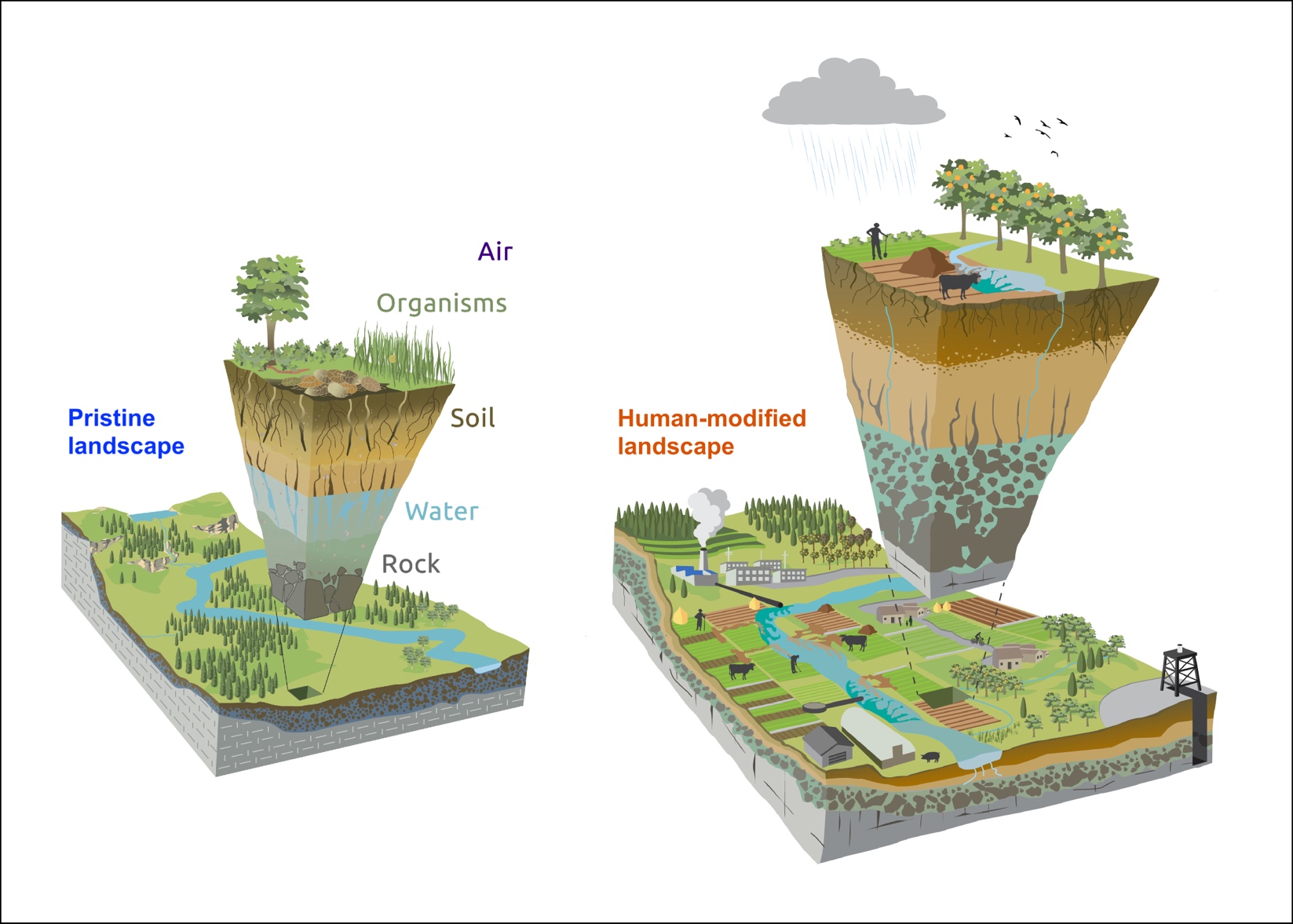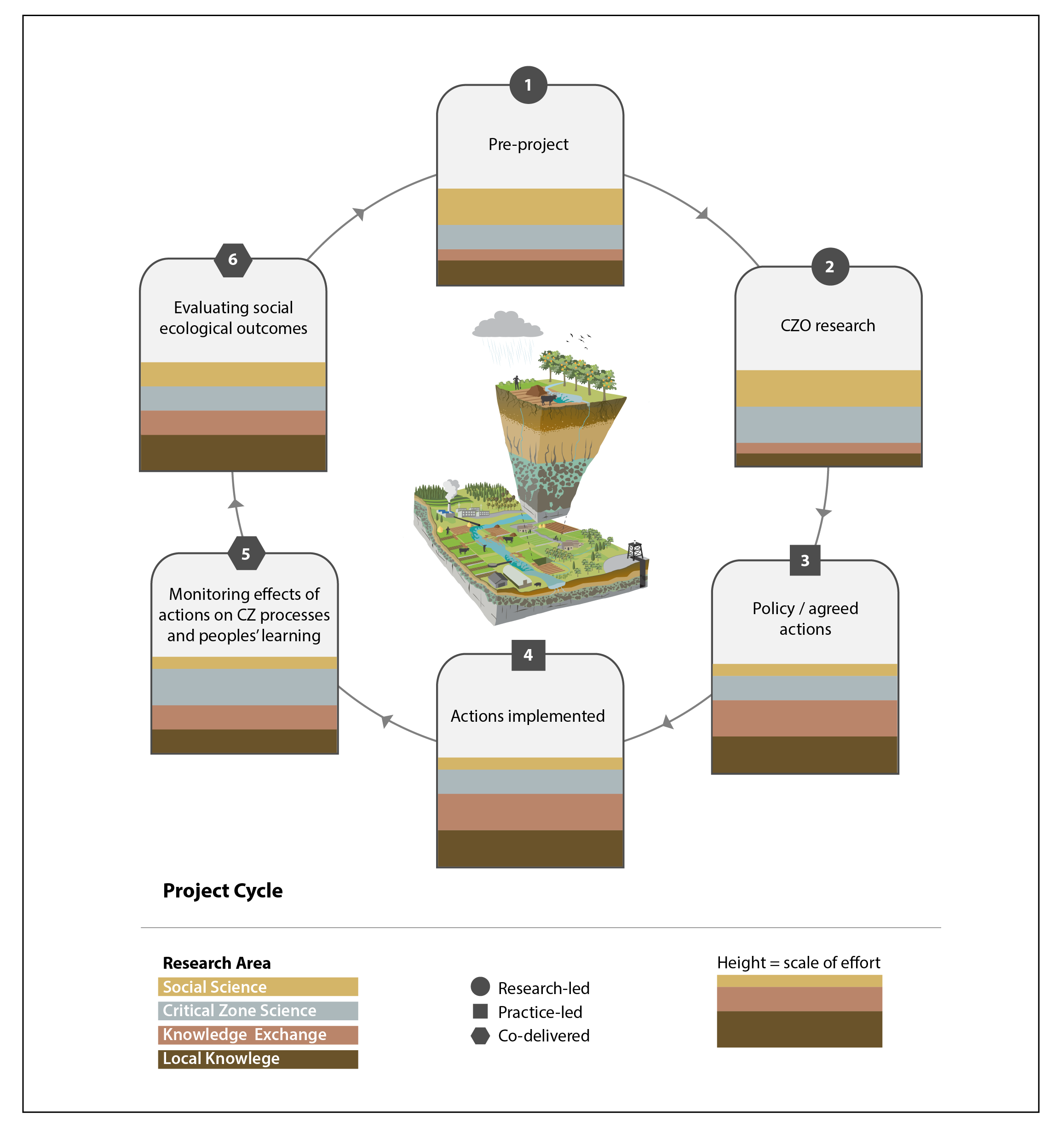GES researchers suggest new ways to better deliver UN Sustainable Development Goals
Published: 18 September 2023
Achieving the UN Sustainable Development Goals may only be possible if human activities are central to critical zone science.
Professor Larissa Naylor, a ‘Doctor of Geography, a Doctor for the Planet’ has led two new papers that show strong interactions between natural processes and human activities in heavily modified agricultural landscapes. Her team’s work shows how better understanding of local knowledge of landscape processes and key pressures on local communities can help better align research to deliver the United Nation’s Sustainable Development Goals (SDGs).
Future plans to tackle the climate change’s impacts on food security must integrate local knowledge to help preserve the Earth’s critical zone, experts have warned. The critical zone is the thin layer of the Earth’s surface extending from the tops of trees to deep aquifers, ‘where rock meets life’. Critical Zone Science (CZ science) explores how landscapes evolve from below the Earth’s surface to the top of trees, supporting life on Earth. It recognizes that multidisciplinary science approaches are vital to understanding the complicated flows of water, nutrients and sediment through landscapes – processes that are fundamental to sustaining ecosystems and the services they provide to humanity. Access to food, drinking water and clean air depend on a well-functioning critical zone, but decades of human activity have degraded the zone’s condition around the world.
In two new papers published in the American Geophysical Union’s journal Earth’s Future, researchers from the UK and China outline how their experience of working with farmers on land heavily altered by human activity has shown how the critical zone can be better managed and protected.
Their insights are summarised in a new diagram in Paper 1, which seeks to visually convey human impact on the Earth’s critical zone more clearly than ever before. The researchers suggest that the new diagram should replace a widely used, more simplified graphic, introduced in 2007, which focused on the natural processes that shape the critical zone without addressing human impact on landscapes.

In Paper 2, the authors present a useful blueprint for transdisciplinary research approaches was created; one that directly engages with and co-develops research programs with the local communities for whom achieving UN Sustainable Development Goals (SDGs) will have the greatest benefit. This blueprint combines science, social science, local knowledge and knowledge exchange where a transdisciplinary project research cycle and funding model have been developed that could be widely adopted by others. This approach is suitable for addressing the global grand challenges of climate change, ecosystem collapse and planetary health necessary for resilient Earth Futures.

Read full press release here:
https://www.gla.ac.uk/news/headline_1003244_en.html
You can access the papers here:
Paper 1: https://agupubs.onlinelibrary.wiley.com/doi/full/10.1029/2022EF003448
Paper 2: https://agupubs.onlinelibrary.wiley.com/doi/full/10.1029/2022EF003472
First published: 18 September 2023

